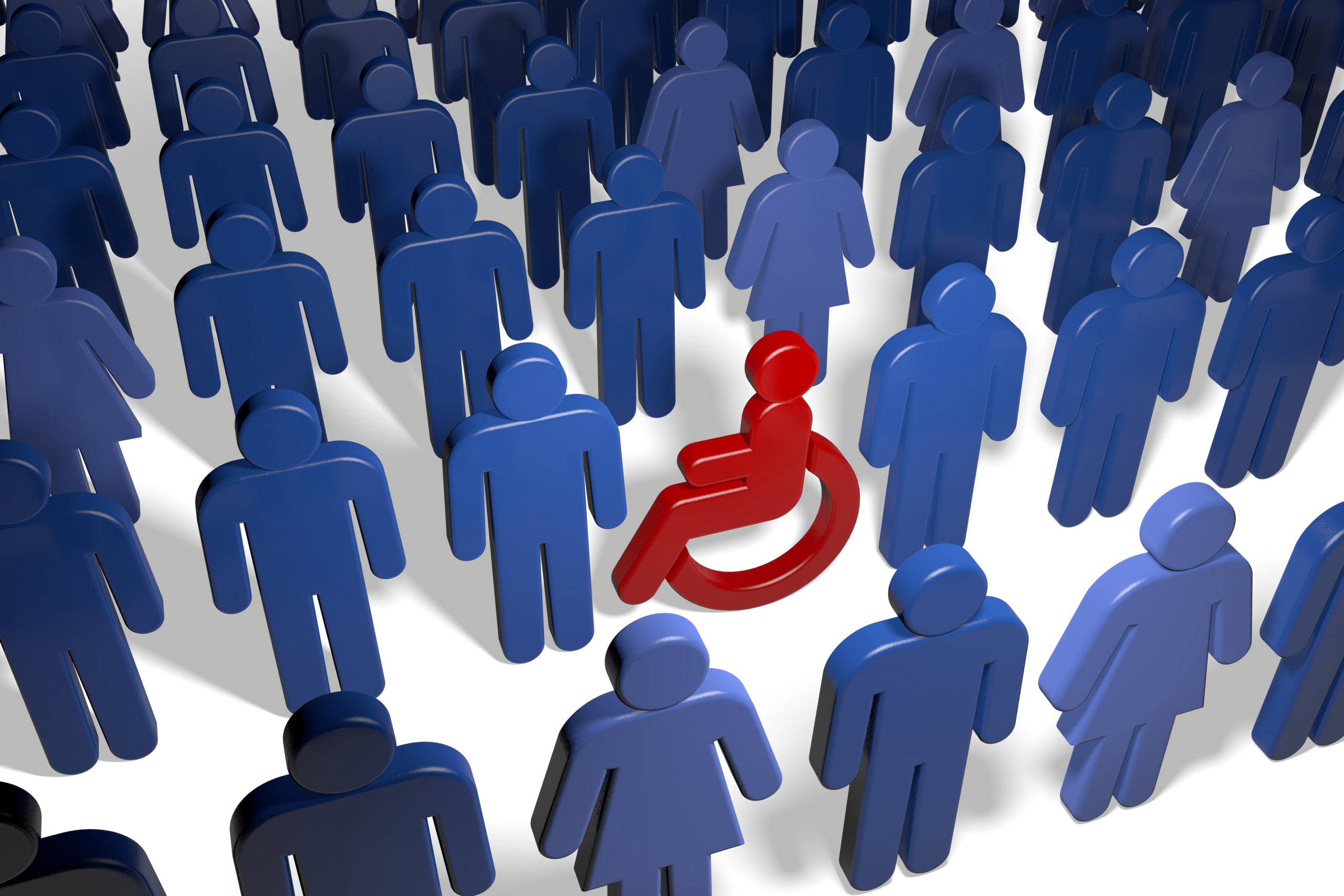You can sue for emotional distress in a personal injury claim. California law recognizes the severe impact that emotional distress can have on an individual’s life, mental health, and overall well-being. Despite being intangible, emotional distress is a significant and real consequence of accidents and injuries caused by someone else’s negligence. The courts allow victims to seek compensation for the mental anguish and emotional suffering that accompany physical injuries.
To successfully sue for emotional distress, it is crucial to understand the legal framework and the necessary steps involved. Emotional distress claims can be challenging due to their subjective nature, but with the right legal representation, victims can demonstrate the profound effect on their lives. By proving the extent of their emotional suffering and its impact on their daily activities, victims can recover damages for their emotional distress, alongside compensation for physical injuries and financial losses. Consulting with an experienced personal injury attorney like those at Mesriani Law Group can provide valuable guidance on navigating these complex claims.
If you have been injured, call us today at (866) 936 7349 to schedule a free consultation
What is Emotional Distress?
Emotional distress is a concept used to describe the mental anguish or suffering that an individual experiences due to traumatic events. However, the legal definition of emotional distress in the context of personal injury claims and tort law highlights the need for a direct link between the distress and the intentional or negligent actions of another party [1]. This type of emotional suffering can encompass a wide range of negative emotions like anxiety, depression, fear, humiliation, and shock. In the context of personal injury claims, emotional distress is often referred to as “pain and suffering” and is recognized as non-economic damage which means it is a subjective and non-monetary loss.
Using a car accident case as an example, emotional distress may arise from the trauma of the event, even if there are no physical injuries. Conditions like post-traumatic stress disorder (PTSD), anxiety, and depression can be medically diagnosed and attributed to the traumatic incident. The challenge in personal injury claims is to provide sufficient evidence to demonstrate the extent of the emotional suffering and its impact on the individual’s life which is why it is essential to gather ample documentation and expert testimony to support such claims.
Examples of Emotional Distress
Emotional distress can profoundly impact an individual’s mental and physical well-being following a traumatic event. This type of distress manifests in various forms and can significantly disrupt a person’s daily life. Here are some ways emotional distress can impact one’s life:
- Post-Traumatic Stress Disorder (PTSD): PTSD is the result of traumatic events like accidents, violence, or natural disasters. Symptoms can include nightmares, flashbacks, debilitating anxiety, panic attacks, and fear.
- Anxiety Disorders: Intense feelings of fear, worry, and apprehension that affect daily life. Symptoms include panic attacks, excessive worrying, restlessness, and difficulty concentrating or sleeping.
- Depression: Chronic sadness, despair, and uninterest in activities that previously brought joy. Symptoms include fatigue, changes in appetite, difficulty sleeping, and thoughts of self-harm or suicidal ideation.
- Sleep Disorders: Problems such as insomnia or nightmares that disrupt sleep patterns and impact overall health.
- Humiliation and Embarrassment: Emotional distress caused by experiences that undermine a person’s dignity or self-worth like public humiliation, bullying, or harassment.
- Grief and Bereavement: The emotional wounds and uncontrollable sadness that occur when a loved one dies. Symptoms that may be exhibited include sorrow, crying, difficulty accepting the loss, inability to sleep, and feelings of emptiness.
- Emotional Distress Due to Discrimination or Harassment: Emotional harm from being targeted or mistreated based on race, gender, sexual orientation, or disability can lead to anxiety, fear, and a sense of injustice.
Can You Sue for Emotional Distress?
You can sue for emotional distress in a personal injury claim. However, plaintiffs could typically only recover damages for emotional distress if it was directly linked to physical injuries [2]. For instance, if a plaintiff suffered a broken leg in an auto accident, they could seek damages for the physical pain and suffering caused by the broken leg. However, if the emotional distress was not related to a physical injury, seeking damages was typically not permitted.
However, many states including California, have expanded this rule to allow plaintiffs to sue for emotional distress even without a related physical injury. This means that conditions like post-traumatic stress disorder (PTSD) or depression can sometimes be the basis for a tort claim on their own [3]. In some cases, emotional distress damages can be pursued if substantial proof shows that the distress was caused by another individual’s intentional or negligent actions. Ultimately, having physical harm can strengthen an emotional distress claim, but it is not always a prerequisite for filing an emotional distress lawsuit.
Types of Emotional Distress
Emotional distress claims can arise from various circumstances, and the nature of the distress can significantly influence the type of legal claim made. Here are the primary types of emotional distress in personal injury claims:
Negligent Infliction of Emotional Distress (NIED):
- Definition: This type of claim occurs when a defendant’s negligent actions cause emotional harm to the plaintiff, even if there is no direct physical injury. These types of claims are categorized as “Direct Victim” and “Bystander Victim” claims.
- Example: In a bystander victim negligence claim, a person who witnesses a severe car accident that involves the death of a loved one and subsequently suffers from PTSD, depression, or anxiety may have grounds to sue for negligent infliction of emotional distress [4]. In a direct victim negligence claim, plaintiffs are allowed to file a suit when there is a violation of duty owed to the plaintiff. In these situations, a complaint can be filed when the plaintiff is in fear of injury or death [5].
Intentional Infliction of Emotional Distress (IIED) [6]:
- Definition: This claim is based on extreme and outrageous conduct by the defendant, which is intentionally or recklessly aimed at causing emotional harm to the plaintiff.
- Example: A person being stalked and harassed by a former partner who experiences severe anxiety and fear due to her stalker’s actions can sue for IIED. The plaintiff must prove that the defendant’s extreme, intentional, or reckless actions caused significant emotional distress.
Wrongful Death:
- Definition: The wrongful death of a loved one can also result in emotional distress. In these instances, surviving family members can experience loss of consortium which can result in extreme emotional trauma.
- Example: A parent experiencing profound depression or grief because their child was killed due to the intentional or accidental negligence of another can claim emotional distress.
These types of emotional distress illustrate the wide range of scenarios in which individuals can seek legal recourse for psychological harm. Each type requires specific evidence and legal strategies to establish the claim and recover damages.
If you have been injured, call us today at (866) 936 7349 to schedule a free consultation
How to File an Emotional Distress Claim
Filing an emotional distress claim involves several critical steps, each of which requires careful preparation and legal expertise. Understanding these steps can help ensure that you navigate the process effectively and build a strong case. Here are the key steps to filing an emotional distress claim:
- Discuss Your Claim with an Attorney: Find an attorney who specializes in personal injury to determine if there is a valid emotional distress claim. They will provide legal insight, evaluate the merits of your case, and guide you through the necessary legal steps.
- Understand the Legal Requirements: Familiarize yourself with the specific elements required to prove an emotional distress claim in your jurisdiction. This includes understanding the defendant’s conduct, the severity of your emotional distress, and the causal link between the actions and the harm suffered.
- Gather Evidence: Collect relevant evidence to support your claim. This can include:
- Witness statements about the traumatic incident
- Invoices for mental health services like therapy or counseling sessions
- Statements from mental health professionals who have treated you for emotional distress
- Medical records and any other documentation that demonstrates the impact of the distress
- Prepare and File the Complaint: Work with your attorney to draft a legal complaint that outlines the details of your claim. This document should explain the facts of the case, the legal basis for the claim, and the compensation you are seeking. Once a robust case has been built, the attorney will lodge the complaint and file a suit.
- Serve the Defendant: The negligent party responsible for the emotional distress will need to be served with a copy of the complaint to notify them of the pending lawsuit against them. This provides their legal team with an opportunity to respond.
- Discovery and Negotiation: Engage in the discovery process, where both parties exchange relevant information and evidence. Your attorney will ensure this process is thorough and will negotiate with the opposing party once all evidence is collected to reach a fair settlement if possible.
- Trial: If a settlement can’t be negotiated, your case will go to trial where evidence will be presented in front of a judge or jury who will then determine the outcome and reward.
What Kind of Evidence Supports an Emotional Distress Claim?
Proving emotional distress can be challenging due to its subjective nature, but with the right evidence and legal strategy, it is possible to build a strong case. Here are key types of evidence that can qualify in an emotional distress claim:
Physical Injuries:
- Documentation: Collect photographs of any physical injuries, medical records, and invoices from doctor visits.
- Testimony: Obtain testimony from physicians or medical experts who treated physical injuries and can attest to their impact on your mental health.
Time:
- Duration: Demonstrate that the distressing behavior persisted over a significant period. The longer the duration, the stronger the case for emotional distress.
Medical Documentation:
- Reports: Gather reports from psychologists, therapists, or other healthcare providers who treated you for emotional trauma.
- Diagnoses: Provide documentation of any diagnoses related to your emotional distress like PTSD or anxiety.
Severity of the Incident:
- Impact: Show how the incident was disruptive, extreme, or life changing. The more severe the event, the more compelling the claim for emotional distress.
Other Documents and Evidence:
- Text Messages and Emails: Keep any valuable electronic communications that demonstrated distressing behavior.
- Witness Testimony: Collect statements from individuals who witnessed the incident or observed its impact on you.
- Surveillance Footage and Police Reports: Provide any additional evidence that illustrates the defendant’s behavior and its effects.
Personal Health Data:
- Fitness or Sleep Trackers: Data from wearable devices can demonstrate changes in physical health indicators such as heart rate or sleep patterns following traumatic events.
Behavioral Evidence:
- Work Records: Documentation showing missed workdays, decreased performance, or changes in employment status due to emotional distress.
- Personal Journals or Diaries: Entries that detail your emotional state, experiences, and how distress has affected your life can serve as powerful, personal evidence.
What Damages Can Be Recovered in an Emotional Distress Claim?
In an emotional distress claim, victims may be entitled to various types of damages which are generally categorized into economic, non-economic, and punitive damages.
- Economic Damages: These are the financial losses incurred as a result of the emotional distress. They include medical bills, lost wages, and any other costs directly related to emotional distress. For example, if the victim required therapy or counseling, the expenses for these services would be considered economic damages. Economic damages aim to compensate the victim for the out-of-pocket costs that have been incurred due to emotional suffering.
- Non-Economic Damages: Non-economic damages cover the intangible losses that do not have a specific monetary value but significantly affect the victim’s quality of life. This includes pain and suffering, loss of enjoyment of life, and the emotional distress itself. These damages are more subjective and are typically determined by a judge or jury based on the severity and impact of the emotional distress on the victim’s life.
- Punitive Damages: Punitive damages can be awarded in certain extreme cases that were brought about by egregious negligence. These damages are intended to punish the defendant and to deter similar actions in the future. Punitive damages are not related to the actual harm suffered by the victim but are instead focused on the defendant’s conduct.
The specific damages a victim can receive for emotional distress will vary depending on the details of their case. Consulting with a skilled attorney can help victims understand their rights and pursue the full range of damages they deserve.
How to Calculate Emotional Distress Damages
Calculating emotional distress damages can be complex due to their subjective nature. However, several methods can help quantify these non-economic damages in a personal injury claim. Here are three common approaches:
Multiplier Method [7]:
- Definition: This method uses a multiplier to calculate emotional distress damages based on the total economic damages (e.g., medical expenses, lost wages).
- Application: The multiplier is typically a number between 1.5 and 5 and is chosen based on the severity of the emotional distress. For instance, if your economic damages amount to $10,000 and a multiplier of 3 is deemed appropriate due to the severity of your distress, the emotional distress damages would be $30,000. The more severe and life-altering the distress, the higher the multiplier used.
Per Diem Method [8]:
- Definition: The per diem method assigns a daily rate to the emotional distress experienced by the plaintiff.
- Application: This daily rate is multiplied by the number of days the plaintiff has endured emotional distress. For example, if the daily rate is set at $150 and the plaintiff has experienced distress for 200 days, the total emotional distress damages would be $30,000. This method helps to provide a clear and systematic way to account for the duration of suffering.
Comparative Analysis:
- Definition: Comparative analysis involves reviewing past cases with similar emotional distress claims to determine a fair compensation amount.
- Application: Attorneys compare the specifics of the current case with precedents from similar cases to gauge an appropriate amount for damages. This method provides a benchmark based on how similar claims have been resolved which offers a more tailored approach to calculating damages.
Using these methods, plaintiffs and their attorneys can work to assign a tangible value to emotional distress damages to ensure a fair and just compensation for the mental suffering endured.
If you have been injured, call us today at (866) 936 7349 to schedule a free consultation
Factors That Impact Emotional Distress Payouts
Determining emotional distress payouts in a personal injury claim involves considering multiple factors that can influence the amount of compensation awarded. Here are some key elements that courts and legal professionals take into account [9]:
- Severity of Emotional Distress: The more intense and prolonged the emotional suffering, the higher the potential payout. Severe conditions like PTSD, chronic depression, or anxiety disorders resulting from the incident will significantly impact the compensation.
- Impact on Life: How emotional distress affects the plaintiff’s daily life including disruptions to personal relationships, career, and overall quality of life. This can include the loss of enjoyment of life and any impairment to mental or physical health.
- Economic Losses: Compensation may include economic losses directly resulting from the emotional distress like medical expenses, therapy costs, and lost income. These tangible financial losses provide a concrete basis for calculating damages.
- Comparative Damages: Courts may review similar cases and the compensation awarded in those instances to determine a reasonable range for emotional distress damages in the current case. This comparative analysis helps establish consistency and fairness in awards.
- Medical Evidence: Reports from mental health professionals including diagnoses, treatment plans, and expert testimony provide objective evidence of emotional distress. This medical documentation is crucial for substantiating the claim.
- Witness Testimony: Statements from friends, family members, or colleagues who have observed changes in the plaintiff’s behavior or demeanor can strengthen the case. These testimonies offer valuable insights into the impact of emotional distress.
- Causation: Establishing a clear causal connection between the defendant’s actions and the plaintiff’s emotional distress is essential. Due to the subjective nature of emotional distress, the plaintiff must clearly demonstrate that the any suffering was directly caused by the negligent actions of the defendant.
By carefully considering these factors, courts and attorneys can better assess and determine appropriate compensation for emotional distress.
Challenges Calculating Emotional Distress Damages
Calculating emotional distress damages in a personal injury claim presents several challenges due to the subjective and intangible nature of emotional suffering. Here are some of the primary difficulties faced in quantifying these damages:
Subjectivity of Emotional Distress:
- Individual Responses: Emotional distress varies significantly among individuals, even in similar circumstances. This makes it difficult to establish a standard measure for compensation.
- Perception Variability: Different jurors may have varying perceptions of emotional distress based on their personal experiences, which can lead to inconsistent awards for similar claims.
Influence of Cultural and Social Factors:
- Attitudes Toward Mental Health: Cultural and social attitudes towards mental health and emotional suffering can impact how jurors and judges perceive and assess emotional distress damages.
- Expression Norms: Societal norms regarding the expression of emotions can influence the evaluation of emotional distress, potentially affecting the consistency of damage awards.
Statutory Limits:
- Non-Economic Damage Caps: Some jurisdictions impose statutory limits on non-economic damages like emotional distress. Plaintiffs may face challenges if their calculated damages exceed these legal limitations.
Evidence Challenges:
- Intangible Nature: Unlike physical injuries, emotional distress is intangible and harder to document and quantify. This makes presenting compelling evidence far more challenging.
- Proof Requirements: Establishing a clear causal link between the defendant’s actions and the plaintiff’s emotional distress requires substantial and convincing evidence which can be difficult to gather.
Despite these challenges, with skilled legal representation, plaintiffs can navigate the complexities of proving and quantifying emotional distress. An experienced personal injury lawyer can help ensure that the emotional suffering experienced is accurately and effectively communicated to achieve a fair compensation award.
Contact Mesriani Law if You Have Suffered from Emotional Distress
If you are experiencing emotional distress related to a personal injury, you don’t have to navigate this challenging time alone. The team at Mesriani Law Group understands the profound impact that emotional suffering can have on your life and is dedicated to helping you seek the justice and compensation you deserve. Our experienced attorneys are committed to providing compassionate, personalized legal support to ensure your voice is heard. Contact Mesriani Law Group today for a free consultation and take the first step toward reclaiming your peace of mind and well-being.
If you have been injured, call us today at (866) 936 7349 to schedule a free consultation
Sources
[1] https://www.law.cornell.edu/wex/emotional_distress [2] https://www.lawsuit-information-center.com/when-can-you-sue-for-emotional-distress.html [3] https://www.findlaw.com/litigation/filing-a-lawsuit/can-i-sue-for-emotional-distress-.html [4] https://www.findlaw.com/injury/torts-and-personal-injuries/nied-negligent-infliction-of-emotional-distress.html [5] https://casetext.com/case/wooden-v-raveling [6] [9] https://www.findlaw.com/legalblogs/personal-injury/how-to-prove-emotional-distress/ [7] [8] https://www.alllaw.com/articles/nolo/personal-injury/two-ways-calculate-pain-suffering-settlement.html
Emotional Distress FAQs
How do you prove you have emotional distress?
To prove emotional distress, you need to provide comprehensive evidence like medical records from therapists or psychologists documenting your condition, witness statements attesting to changes in your behavior, and any relevant personal health data like fitness or sleep tracker records. Additionally, supporting documentation such as emails, texts, and personal journals detailing your emotional state can strengthen your claim.
Is it hard to sue for emotional distress?
Suing for emotional distress can be challenging due to the subjective nature of emotional suffering and the need for substantial evidence. Successfully proving emotional distress typically requires detailed documentation from medical professionals, witness statements, and other supporting evidence to demonstrate the severity and impact of the distress on your life.
What is an example of suing for emotional distress?
An example of suing for emotional distress is a case where a person witnesses a loved one’s death in a traumatic accident like a car crash and subsequently suffers from severe anxiety and loss of consortium. The individual can file a lawsuit against the negligent driver responsible for the accident to seek compensation for the emotional suffering and psychological impact experienced as a result of wrongful death that took place in the incident.
What is considered emotional distress?
Emotional distress refers to significant mental suffering or anguish caused by an incident, typically involving negligence or intentional harm by another party. It can manifest as anxiety, depression, fear, humiliation, or PTSD, and often requires substantial evidence to support claims for compensation in a legal context.








